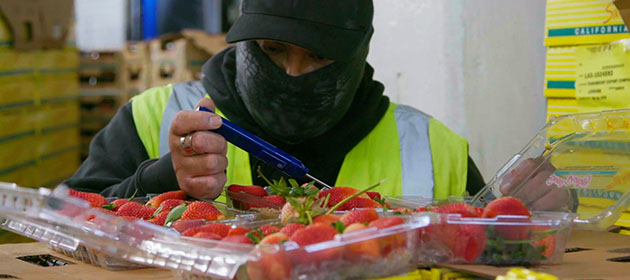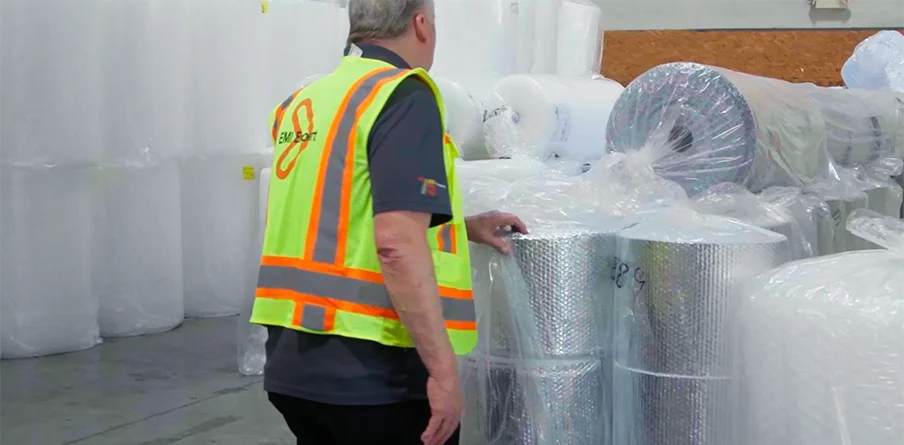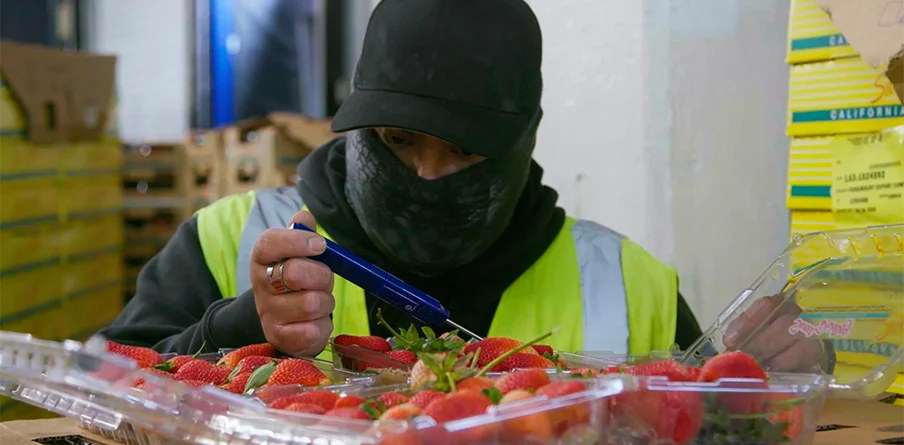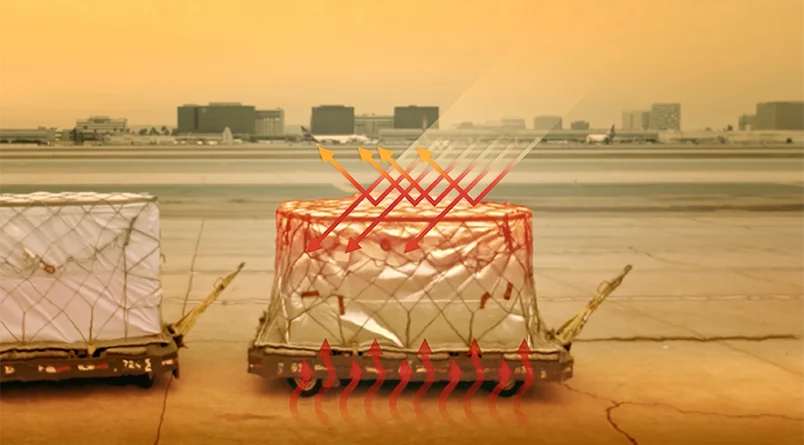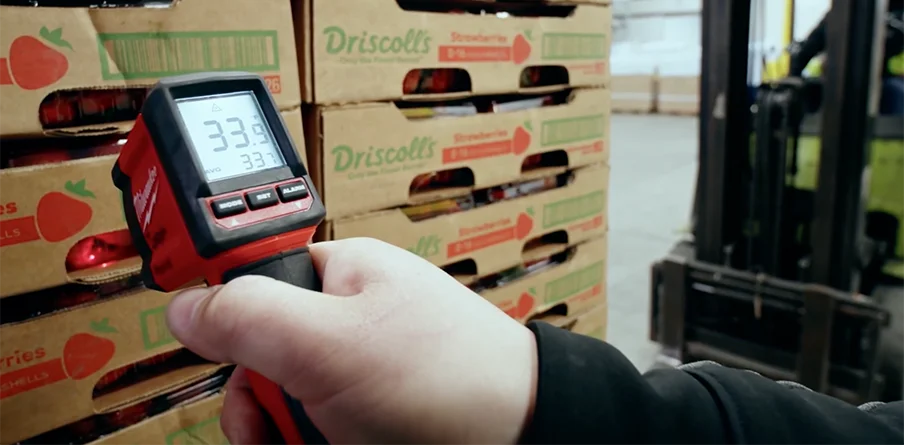If you think of expensive fruit, you immediately think of cherries. So, if 10% of a plane load of cherries has a shortened shelf life, to the customer, it tastes nasty and to the grower, it’s the pits. And if you’re a shipping company, you’re done. When your business involves perishable products, protection is always a top priority. Which means every cargo load needs to arrive fresh within a 10° range to all corners of the globe, from flowers to tubers, iceberg lettuce to ice cream, flounder to filet mignon. In shipping this delicate and precious cargo by air all around the world, it also means dealing with the most demanding space constraints, as well as huge temperature and moisture fluctuations. Not to mention the seasonality and short pick-to- eat time for products like fruit (don’t even get us started on transporting shellfish). Landing a shipment hot causes the shelf life of a product to dramatically decrease, causing a no-win situation between consumers, growers and shippers. While every company loses a certain percentage of product due to spoilage when transporting perishables, Commodity Forwarders was confident they could find a way to deliver these goods more efficiently. So the question was threefold: how could they keep their goods fresh, keep costs down and still hit their sustainability targets under these challenging conditions?
For decades, the industry standard for shipping perishables was wrapping the pallets with Mylar bubble protective solution. In fact, the entire shipping industry was under the misconception that foil was the only cost effective gradient barrier system. Commodity Forwarders already had empirical and fiscal proof this was untrue, as the Mylar they were using was only able to block 80% of the visible and infrared energy products they were exposed to. In other words, the industry standard simply wasn’t up to the standards of CFI. On top of it all, CFI President Chris Connell knew there had to be a better, more efficient way to protect perishables, as the industry had been using the same bubble foil that was used starting in the 1970s all the way into the 2000s. He was confident, after 30 years of the same old solution, there had to be a smarter one. Chris and CFI were on a mission to reduce shrinkage, generate less food waste and above all, help the planet by creating an eco-friendly, fully recyclable containment system.
With their next generation of protective wrap, the company was searching for a way to protect against visible light, which makes up 48% of product energy heat exposure. Commodity Forwarders wanted a solution that maintained fault tolerances for longer periods, deliver measurable materials savings and help achieve their long-term goal of becoming a carbon-neutral company by 2030.
Commodity Forwarders is a freight forwarding company that transports perishable products from 14 U.S.-based offices to locations around the globe. In fact, that’s part of their company mission, “Transporting perishable products worldwide, while exceeding expectations through our people, network and technology.” CFI specializes in handling some of the most challenging products—from seafood and meat to flowers and foodstuffs. Commodity Forwarders is owned by global shipping giant Kuehne + Nagel Inc., so they’re able to leverage over 130 years of freight forwarding knowledge from their parent company. With over 400,000 customers and nearly 1,300 locations worldwide, Kuehne + Nagel connect 106 countries. Not only bringing goods to all corners of the world, but bringing the world closer together in the process.
CFI and Ernest have a long-standing relationship, as well. With a 10-year history together, Commodity Forwarders and Ernest have been partners and collaborators for more than a decade. But as new technology was created, CFI wanted to continue to explore new options to protect their perishable goods throughout the long journeys around the world.
With technology top of mind, Ernest brought in their temperature packaging expert, Larry French, to help find a custom solution that would hit all of CFIs needs. Larry had extensive experience in temperature control packaging in the medical field, which was fortunate in taking on this new temperature-sensitive challenge. Another fortunate thing? Larry had the support, backing and guidance of Chris Connell. Chris understood that to get this solution off the ground, it was going to have to be a collaborative effort. So he not only put his trust in Larry. He was ready to roll up his sleeves and figure out the answer together.
After looking at the proposed solution, Larry understood the current product being considered couldn’t actually be reused or recycled. In fact, the reflective metal of the Mylar wasn’t bouncing heat off as everyone thought. It was actually trapping the thermal energy inside the pallets, effectively acting like an enormous Easy-Bake oven. So he took on the challenge himself: to create a solution that was truly sustainable, cost effective and ensured successful transport of perishable goods. Larry and his team had a tall order to tackle. They needed to create a wrap that was much more efficient than Mylar to keep items cooler, longer so that less material (and money) was going in the dumpster. In other words, this solution needed to get CFI out of the red with the recyclability of going green.
“Getting perishables from our offices to resellers around the globe means withstanding challenging conditions, including heat and sunlight. With this new TempEndure technology, we don’t have to worry about shipments spoiling, even if they get delayed on the tarmac. That’s not only a huge relief, it’s a huge savings for our business.”
Chris Connell
President Commodity ForwardersIn tackling this new challenge, the Ernest team knew that innovative materials were going to be key to maximizing performance and minimizing costs. One of the obstacles was the solution had to be low-profile due to airplane cargo environments, which only allowed a 1⁄2-inch tolerance around the exterior. This eliminated some materials options, such as military-grade protective wraps, which can be up to two inches thick.
As a result, the Ernest team’s exploration focused on materials that could deliver the highest possible light refraction capabilities with the least physical substance. The result was a refractive coating that could be used in conjunction with 100% low-density polyethylene (LDPE). Using LDPE as the base was ideal because as a #4 plastic, it is highly recyclable. In addition, it is FDA-approved for food contact, which was a key criterion for this application.
The wrap the Ernest team developed is now part of the Ernest Packaging TempEndureTM shielded products line. Essentially, the new TempEndureTM wrap coating works like an optical lens to block all visible light and the majority of near-infrared waves (NIR) from reaching the product. Because it is a non-porous polymer film system, It also serves as a vapor barrier, which has key benefits specifically for Commodity Forwarders’ business.
Larry and the Ernest team started by developing pallet covers using the material and then shifted the design to create an LD7 skid wrap. The seams are taped to close the system, and structural pallet insulation was introduced to optimize protection and increase temperature control. By working with Ernest to order these directly, CFI saves 90% of their labor time to make a pallet cover on-site by hand.
To certify performance, the team conducted a battery of tests and evaluations, including 27 air and 12 ground field tests ranging from live shipments to ground testing on asphalt (up to 160°F) and concrete (125°F). One major discovery was happening right beneath their feet. They found that most of the heat was bouncing up from the searingly hot asphalt of the tarmac, rather than beating down from above. So the company decided to pilot usage of the TempEndureTM at one of its hotter locations: the Hawaii distribution center. Their goal was to find a solution that held goods between 1-10 degrees Celsius for 24 straight hours. Since air freight can be in flight from anywhere between 12-21 hours, and remain on the tarmac for four hours before takeoff and four hours after landing (with an additional four hours for any stop en route), this 24-hour protection was imperative.
It was an iterative process of refinement, with the Commodity Forwarders team involved every step of the way, and it resulted in an end solution that delivers highly promising results. Ernest delivered a TempEndureTM solution that worked incredibly well to keep goods at a constant temperature in the air. To combat the ground radiation factor, they also created an integrated system to protect pallets from the heat bouncing up from the tarmac before takeoff and landing. The key was working directly with the CFI leadership, who championed the tests over a nine-month period to ensure the solution would work for all of their transport needs going forward. This approach to cold chain is what CFI calls their Layered Approach. It’s all about keeping things cooler, longer when faced with tarmac heat and gaps in the cool chain.
Yes, the testing process was long, but when you have a strong relationship, trust and proven capabilities with your clients, the sky’s the limit. By partnering with CFI to accomplish these rigorous testing requirements, it not only strengthened the bond with Ernest. This collaboration provided concrete proof the solution was exactly what CFI needed. In fact, it was so successful that in the five years since the solution has been implemented, CFI hasn’t had a single field failure.
“Ernest has proven to be an extremely valuable partner for almost a decade, and with this innovative TempEndureTM technology they’ve taken our partnership to the next level. Not only are we saving costs on all sides, they’re helping us stand out in the market and on the tarmac, all around the world.”
Chris Connell
President Commodity ForwardersWith this new protective solution, Commodity Forwarders found financial benefits on all sides of the equation. On the costing side, the newly developed TempEndureTM provides significant savings compared to the old Mylar foil technology. In addition, this new material has helped increase the revenues from the company’s shipments by reducing the loss of cargo weight due to evaporation. By creating a closed system with a vapor barrier, TempEndureTM helps avoid the typical 5-10% reduction in cargo weight due to goods losing water content. Since air freight is paid out in weight, this water retention is crucial to the bottom line.
While these savings have been beneficial, the greatest monetary advantage of the new system came from the recyclability of the product. Mylar is not a recyclable material since it consists of different material substrates. As a result, Commodity Forwarders was forced to pay for its disposal. At the Hawaii location, this resulted in $186,000 per year for trash disposal (due to island incineration requirements) and the need for a 40-foot dumpster that was filled approximately every five days. Different countries around the world also have especially stringent rules regarding recyclability, especially Japan and Korea.
With a wholly recyclable solution in place, the company decided to purchase a compactor/ bailer for its Hawaii distribution center with a moveable carriage with a chamber for both corrugated and the LDPE pads. This 41⁄2 x 8-foot bailer cost approximately $16,000. In using the compactor, Commodity Forwarders projects to earn approximately $120,000 per year in recycling revenue. Between the savings on trash disposal and revenue earning potential, the company is seeing almost $300,000 in benefits from this packaging evolution.
CFI was so impressed by the product Ernest helped them create, they decided to put their name on it: BlueSkys. To better express CFIs commitment to sustainability, all TempEndureTM products were not only branded with the signature blue tint, but also branded with the international sign of recyclability. This way, people can see what products are transported by CFI on the tarmac, know those products have been protected, and recognize CFI’s commitment to making a greener, more sustainable planet. It’s a proud reminder of our partnership and sends a message to the industry that when we put our heads together, we can do better for generations to come.
For Commodity Forwarders, finding a better way has always been at the heart of its business and Ernest Packaging Solutions was excited to have the opportunity to develop the TempEndureTM BlueSkys wrap for them. Our pioneering work together not only furthered our partnership and led CFI to an exclusive product. In the process, we also happened to change the entire industry for the better. As Commodity Forwarders continues to improve protection at its distribution centers, on the tarmac and in the air, our relationship only becomes stronger. Coupled with our shared commitment to sustainability, we’re looking forward to continuing our partnership for generations to come. Because no matter the weather, our collaboration and connection with CFI will remain at a constant.

